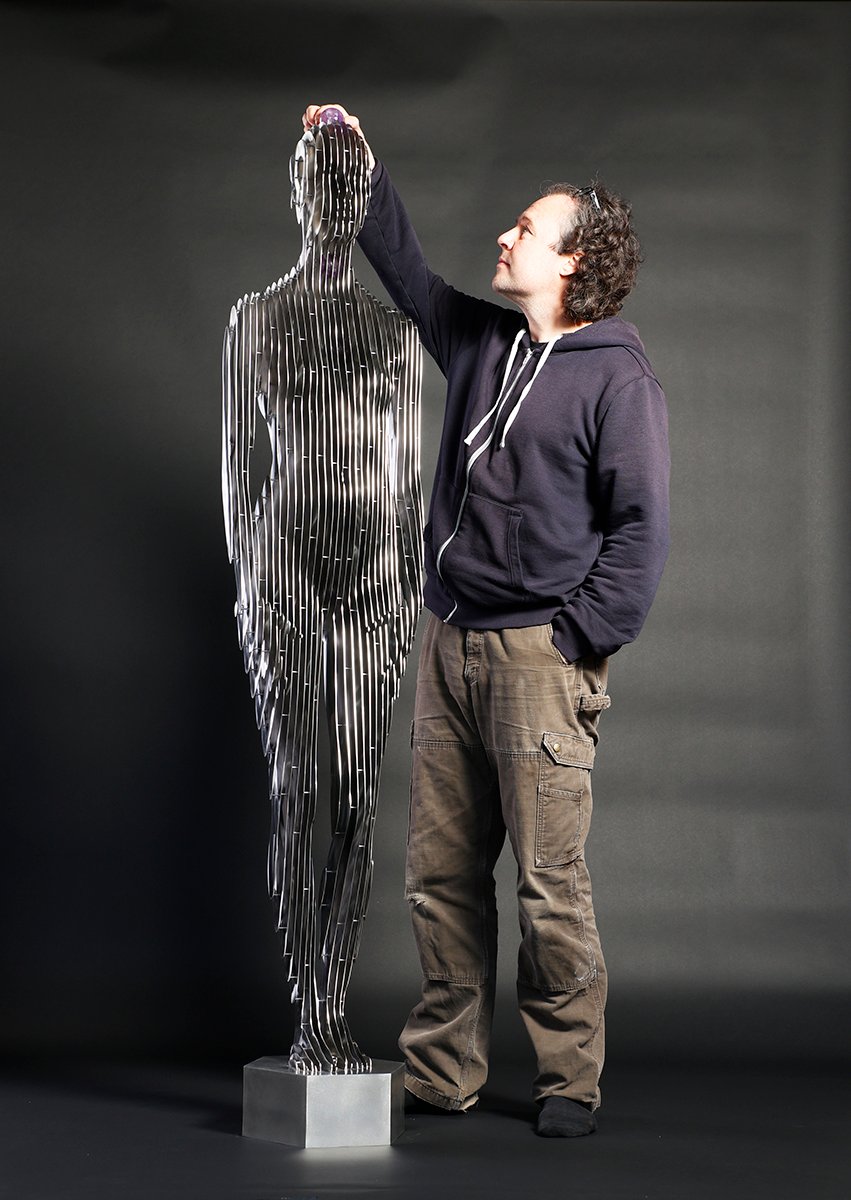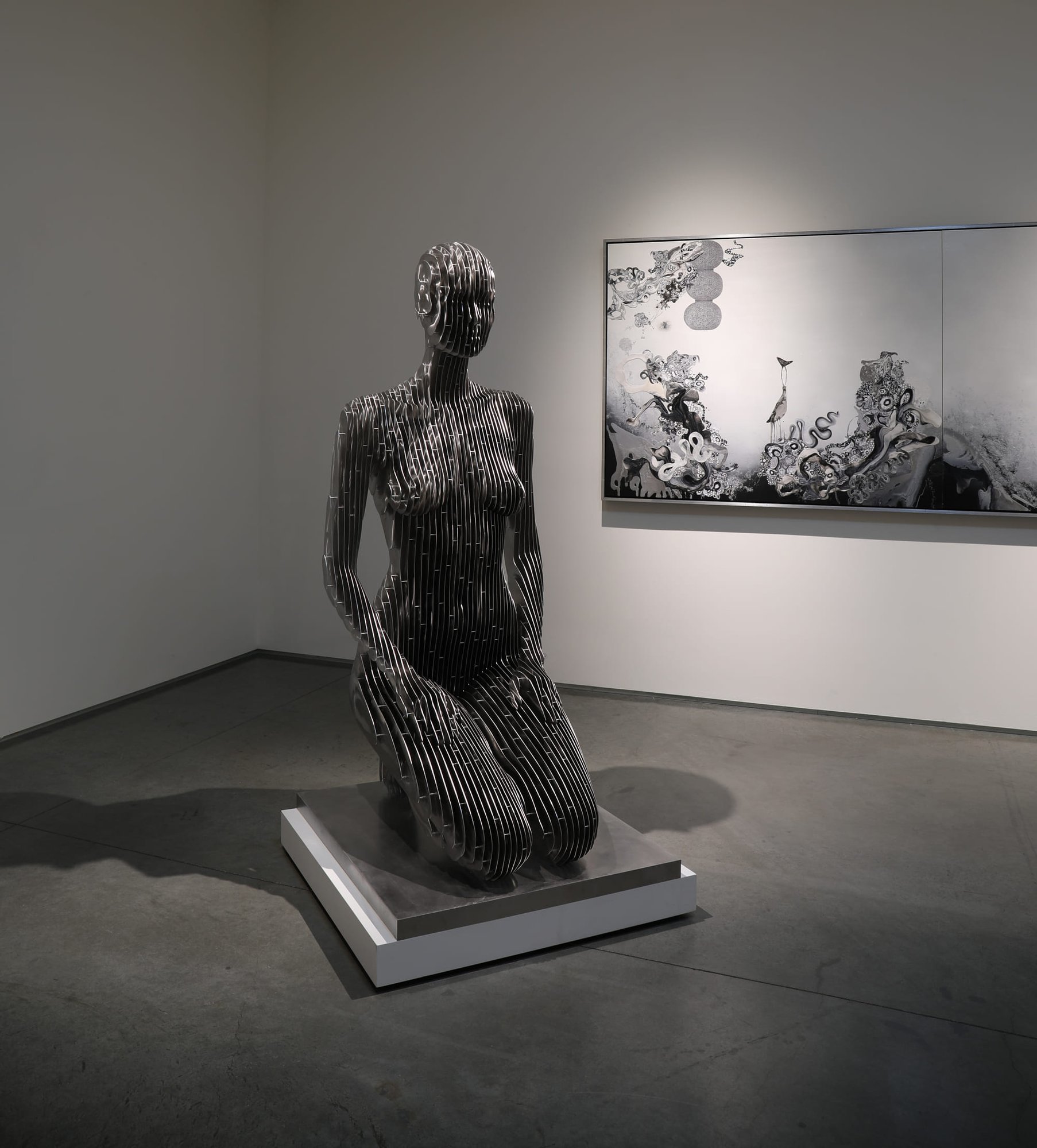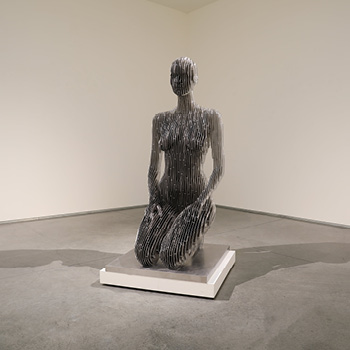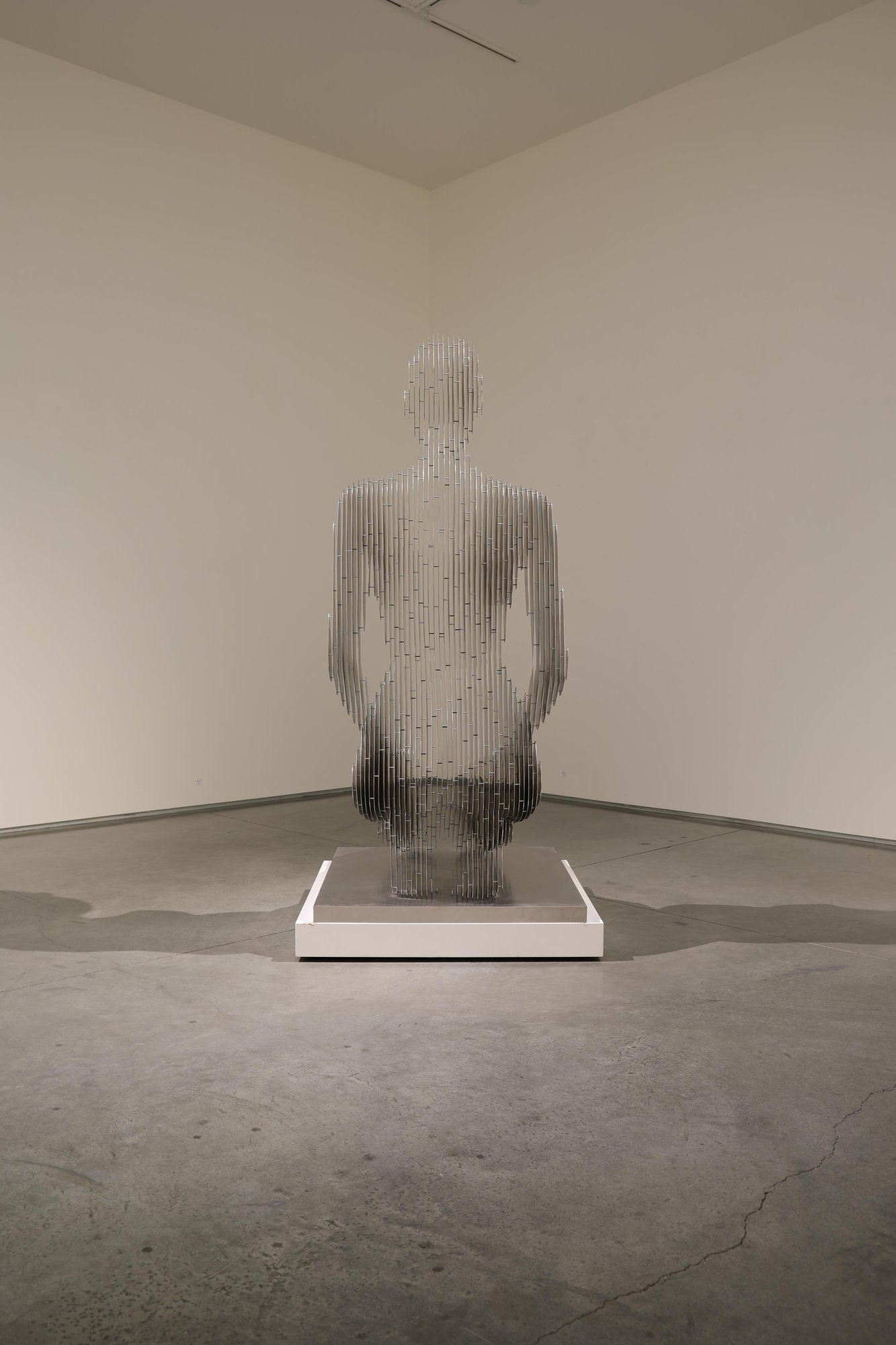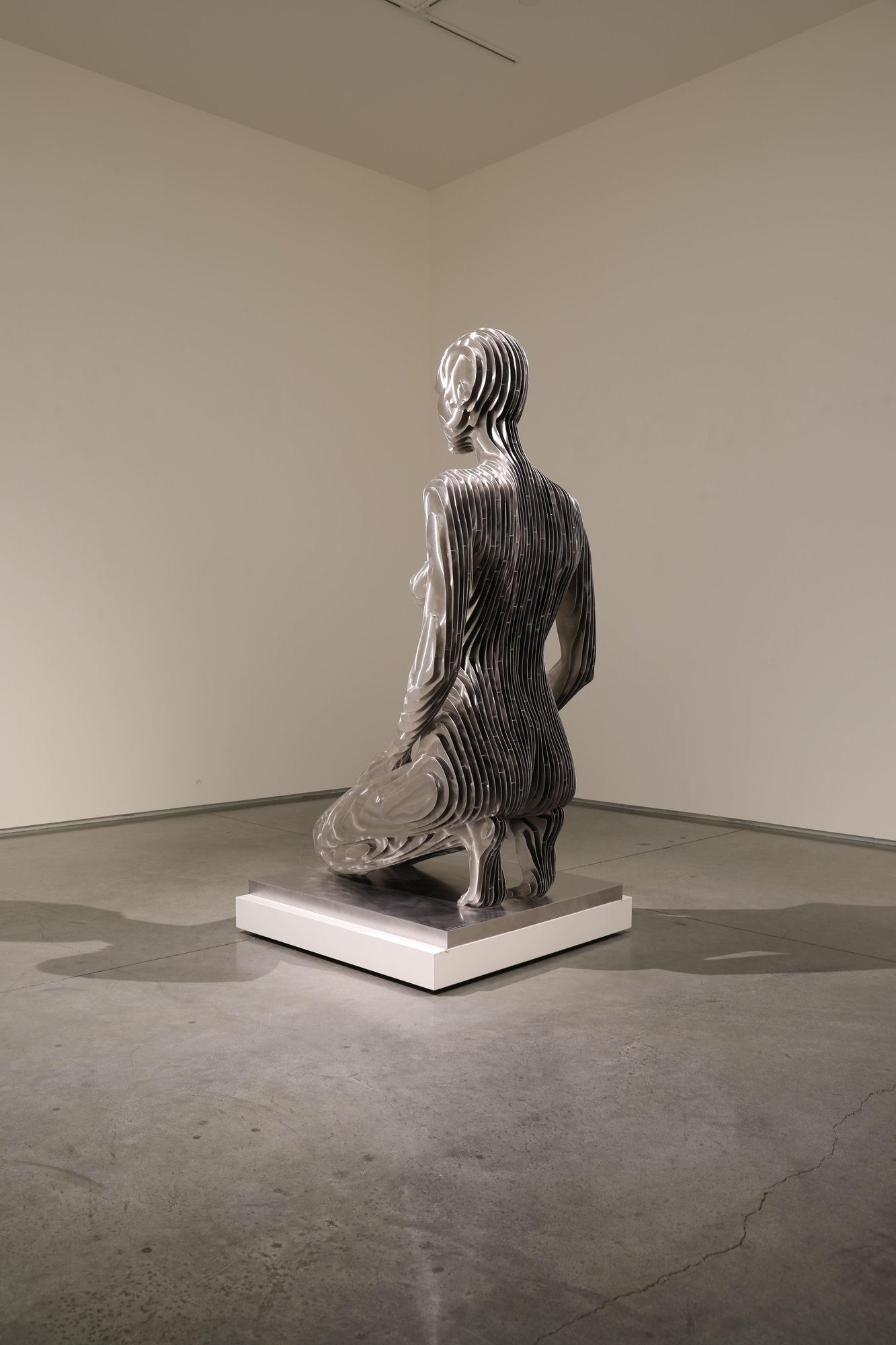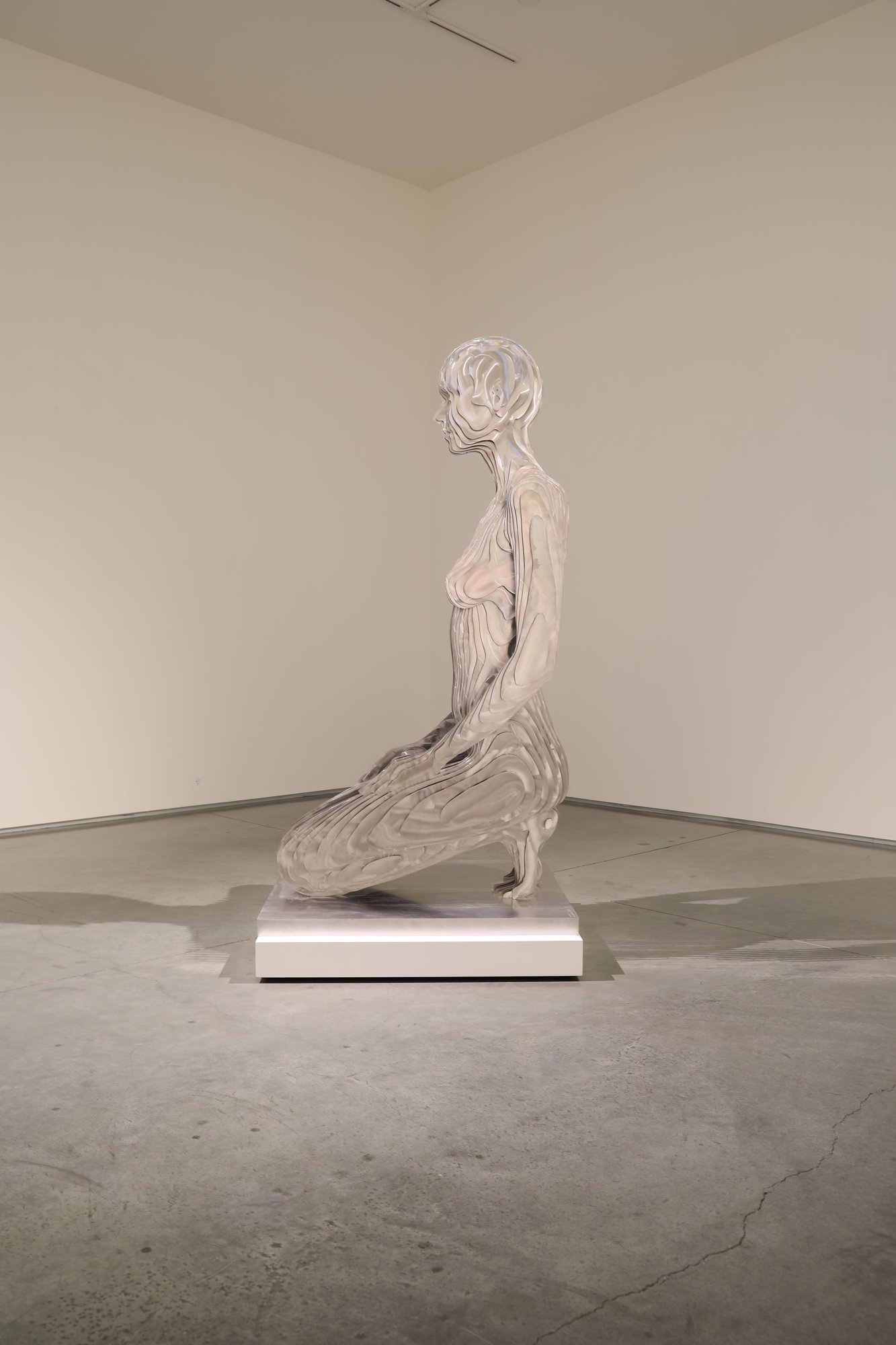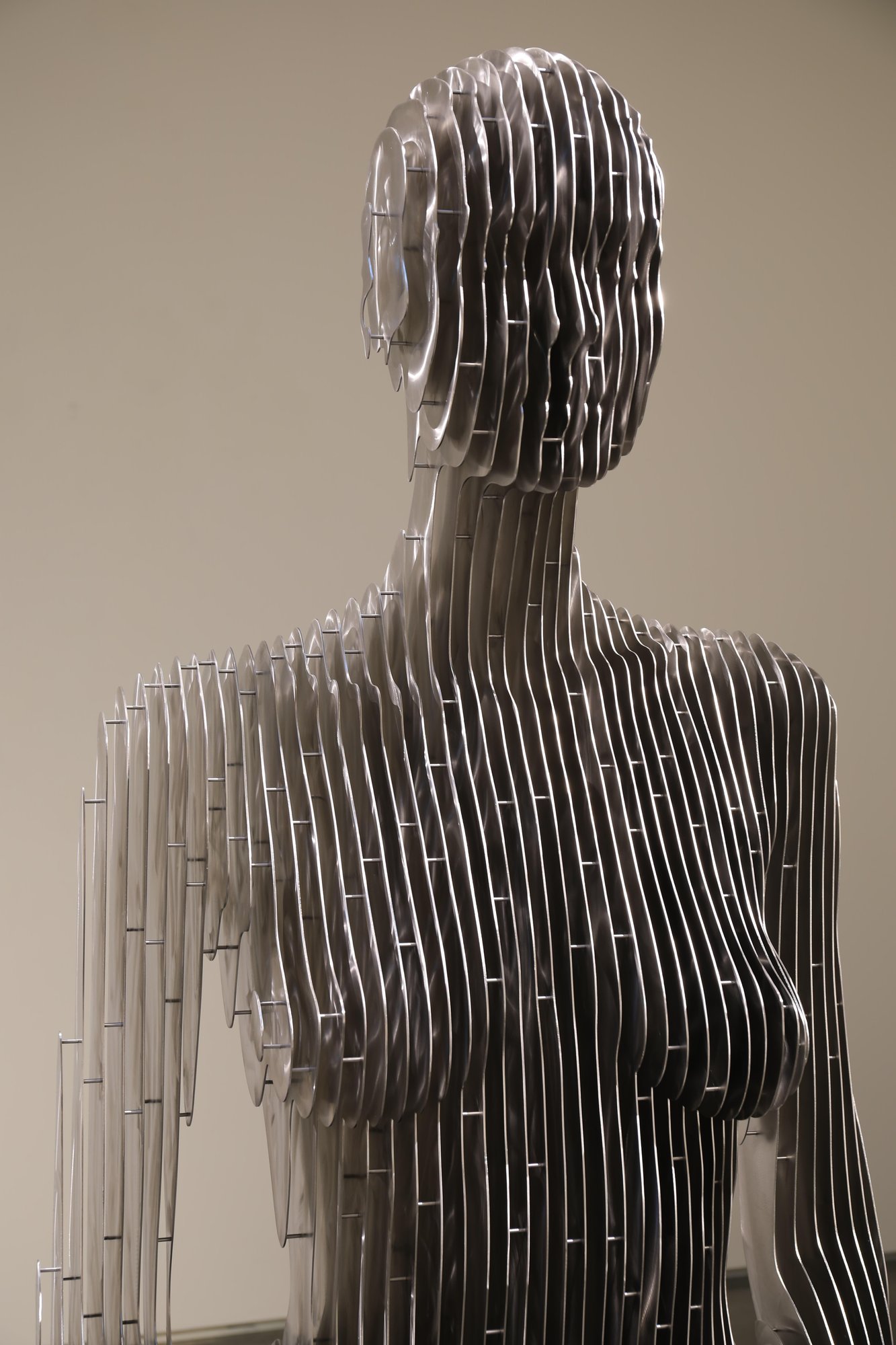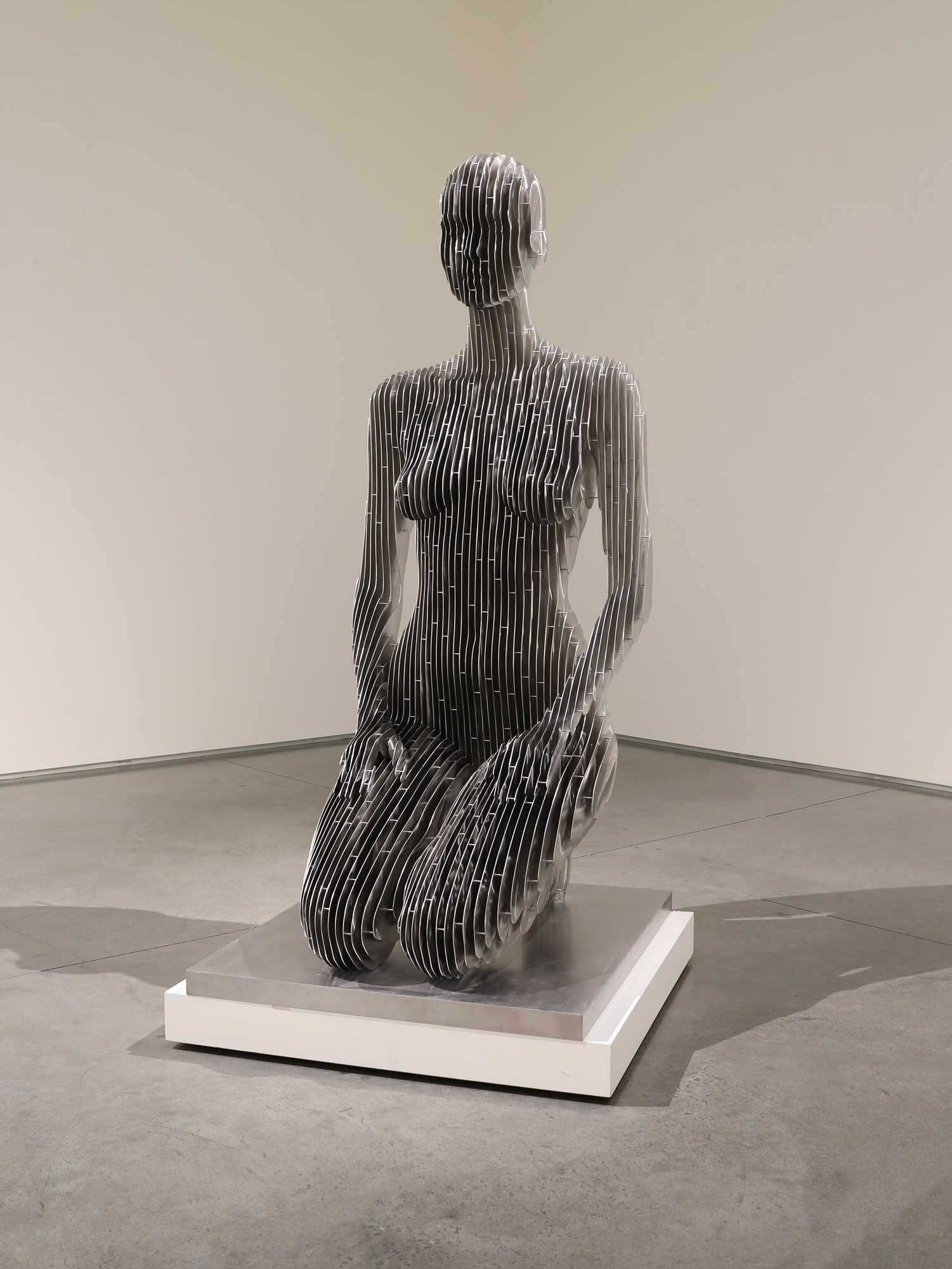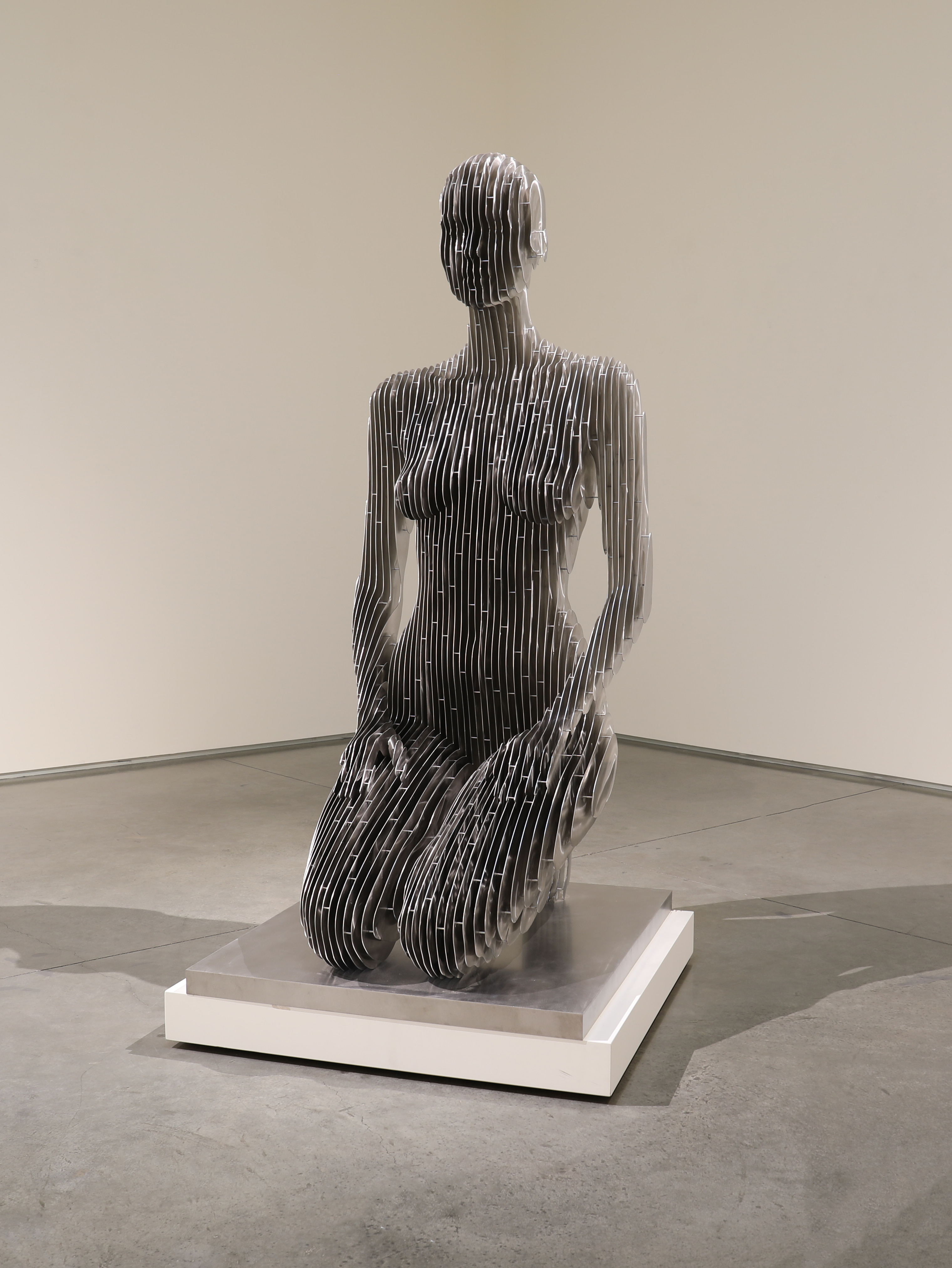
Availability and Pricing
Please fill out the form below and we will send you an up-to-date pricelist with availability.
take a look
Video
Video of the "Kneeling Woman on Heels" in our Village Court Gallery.
Julian Voss-Andreae
Many artists have been inspired by Quantum Physics, but very few can claim to be Quantum Physicists. Julian Voss-Andreae was born into an artistic family. His mother is a violinist, and his father created a feature-length movie about a famous artist back in their native Hamburg, Germany. Both mother and father were very supportive of Julian’s artistic talents. His curiosity, however, took him on a different path and he studied Quantum Physics, first in Berlin, then in Edinburgh, and finally in Vienna, where he did his graduate work in Anton Zeilinger’s research group. Zeilinger won the Nobel Prize for Physics in 2022.
The specific experiment Voss-Andreae participated in is now commonly featured in physics textbooks. His team was able to illustrate how the familiar world of our immediate experience emerges from the famously counterintuitive world of quantum physics by demonstrating quantum behavior for the then largest particles ever, soccer ball-shaped molecules affectionately known as “buckyballs” To this day he is invited by universities nationally and internationally to speak about the topic or participate in research much like the four-year NSF-funded collaboration using DNA as the structural building blocks to develop “biomemetic self-replicating materials.”
It was also through science that he met his wife, Adriana, a former neuroscientist, who has collaborated with him on several projects. In 2001, he moved to the US and went on to get his BFA in sculpture at the Pacific Northwest College of Art in Portland, Oregon where he operates his studio to this day. He received his first public commissions while still an art student, and was discovered by galleries and soon after, videos of his work went viral.
Today, his sculptures have found their way into hundreds of private and public collections in the Americas, Europe, Africa, Australia, and New Zealand. He has received numerous prizes for his work, has been published in the press, and has found high critical acclaim.
Private collectors often wait several months to receive one of his sought-after sculptures. While he has many different concepts, the “disappearing” sculptures strike a particularly deep chord as the most popular part of his oeuvre. They were conceived when Voss-Andreae imagined himself as the mathematical object that describes the dynamics of the buckyball particle in his graduate research, otherwise conjured as a human being moving through space and time in the most basic motion available to us, namely walking, in analogy to the particle in the laboratory, envisioned by Max Planck as a vibrating entity itself, whose vibration gives rise to the wave motion of quantum physics. The wave fronts that define the mathematical structure of the wave function are envisioned as evenly spaced slabs of steel in his analogy and the idea for his “disappearing sculptures” was born . Built in slices of marine grade stainless steel, the most industrial, cold, and harsh material in art, Voss-Andreae depicts the soft human form in a way that depending on the viewer’s perspective, appear solid, or virtually disappear. Born from within the current paradigm of reductionist-materialist science, Voss-Andreae uses the rich metaphorical potential in this approach to reveal the underlying nature of reality as holistic and deeply spiritual.
